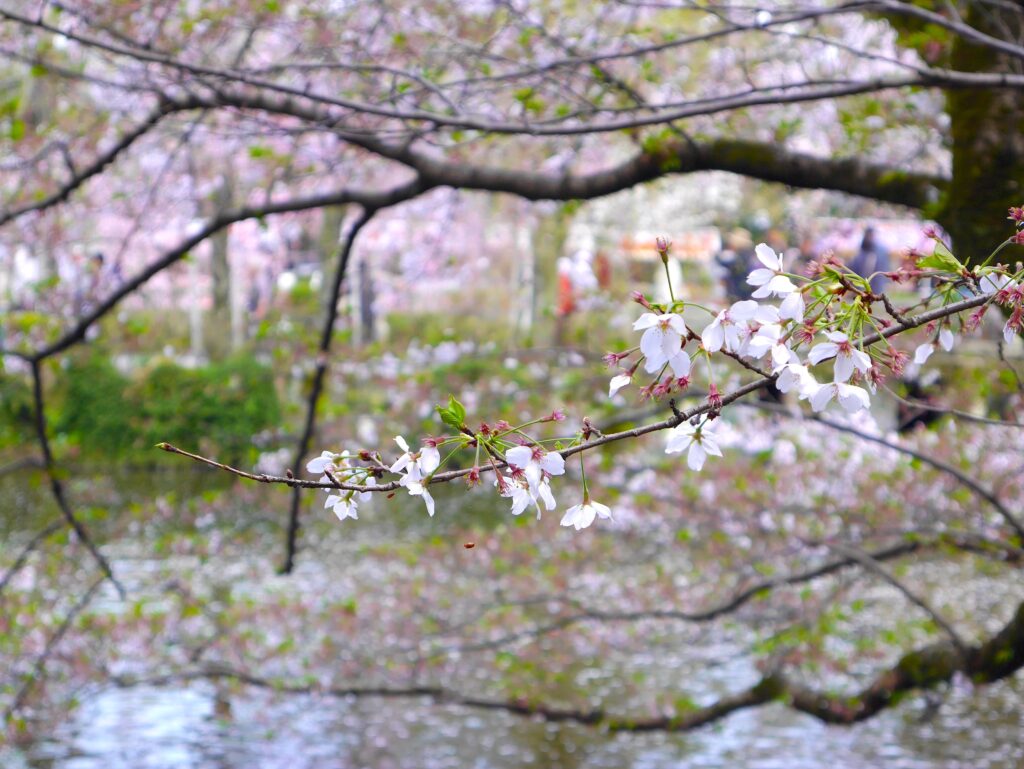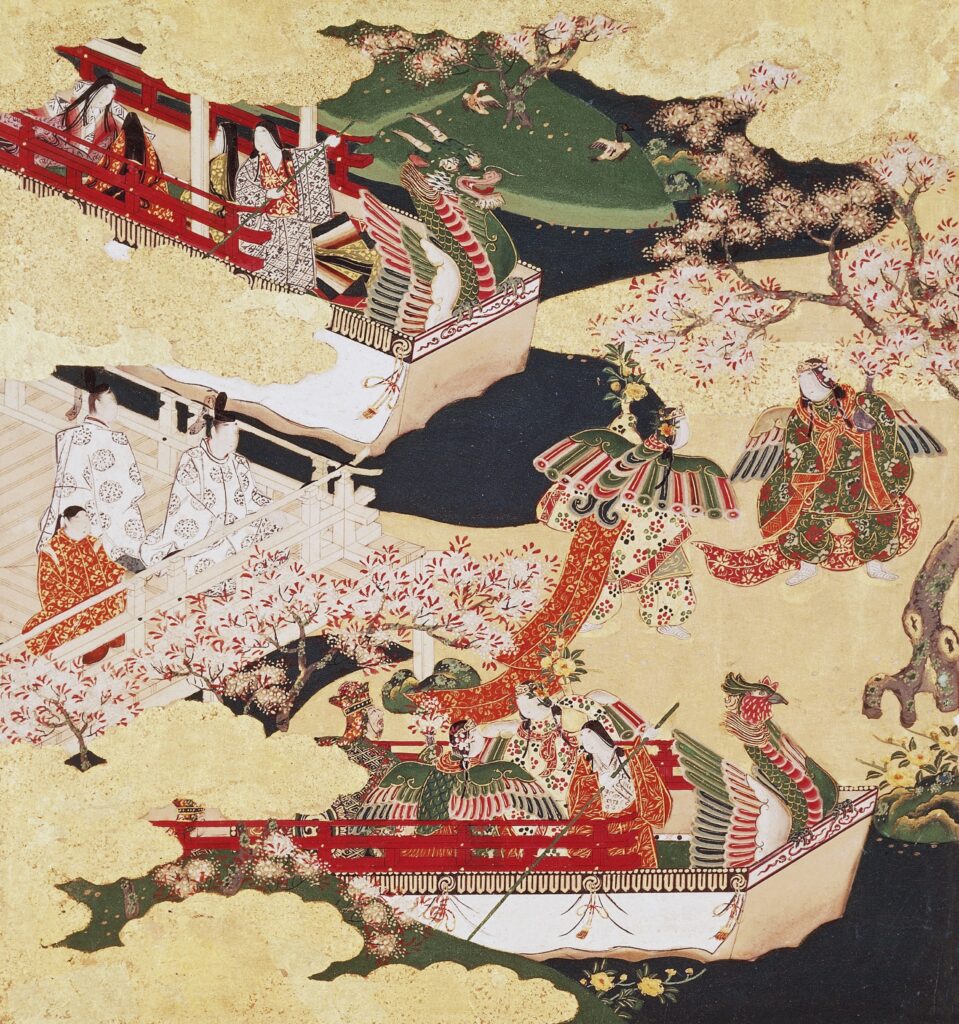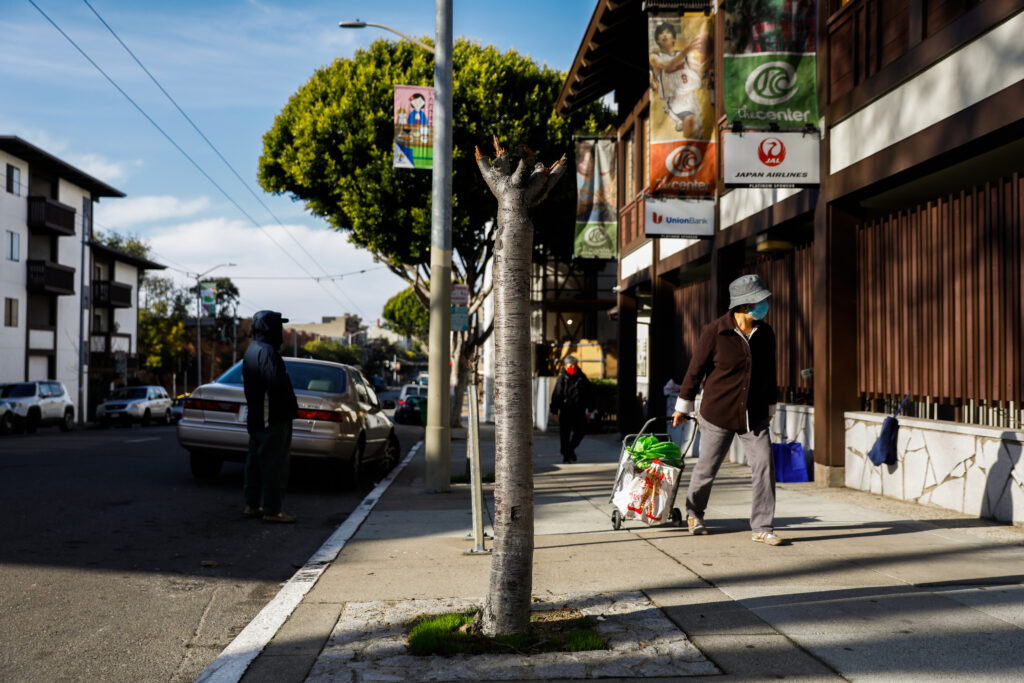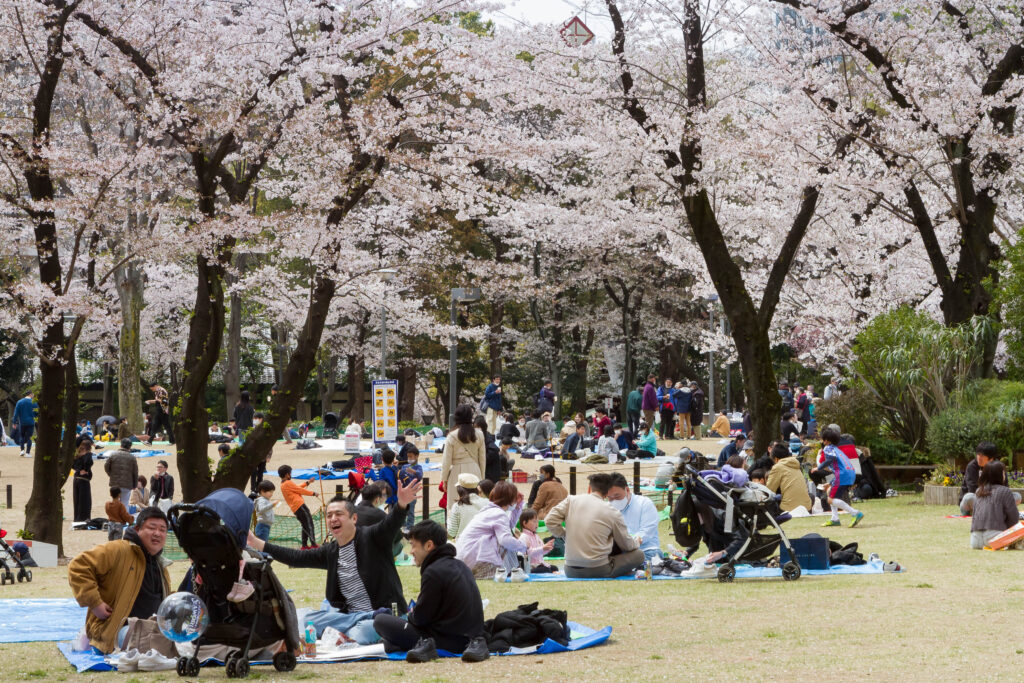The Human Roots of Japan’s Cherry Blossoms
SAKURA FEVER
I was in Japan this March just as the famed cherry blossoms were beginning to appear in some parts of the country. With fevered interest, people were following predictions of when and where the blossoms would arrive next. Many checked for updates on the cherry blossom map published by the Japan Meteorological Corporation, a weather-forecasting company.
Even before the actual cherry trees were in bloom, the pink flowers were everywhere—from the specialty latte flavor released by Starbucks to the designs adorning shopping centers, billboards, and storefronts.
Cherry blossoms, known in Japan as sakura, are well-known around the world as a symbol of Japan’s natural beauty and cultural identity. Many Japanese, from haiku poets to government officials, have used and encouraged this association. The 18th-century thinker Motoori Norinaga put it this way: “If I were asked to explain the Japanese spirit, I would say it is wild cherry blossoms glowing in the morning sun!”
The blossoms are also a popular draw for tourists. Cherry blossom season attracted almost 5 million foreign visitors before the pandemic. This year, many locals are eager to see business springing back to life as COVID-19 restrictions have eased, allowing international travelers back into the country for the first spring season since 2019.
An Indonesian traveler I met in Kyoto told me that seeing the cherry blossoms was on her “bucket list.” She had purchased a two-week unlimited rail pass so she could catch the blossoms all over Japan.
As a tourist myself—albeit someone who has visited Japan regularly for over a decade—I can’t help but agree that the blossoms are truly a sight to behold. In full bloom for just one to two weeks, cherry blossoms epitomize the ephemeral nature of life itself. But coming after the gloom of winter, they also represent rebirth and hope.
Taken together, this complex sense of pathos and appreciation for the reality of impermanence is encapsulated by the Japanese concept of mono no aware (物の哀れ).
As an anthropologist interested in how humans live with other species—from dogs to monarch butterflies—I am also intrigued by the role humans have played in shaping what the cherry blossom has become. Not only have people ascribed various meanings onto cherry blossoms across the centuries, but they have also been deeply involved in breeding, propagating, and cultivating the trees.
How have culture and technology come together to produce the beloved sakura we know today?
THE RISE OF SOMEI-YOSHINO
One place to start is with the origins and botanical history of one particular cultivar of cherry tree: the somei-yoshino tree.
Across Japan, there are various species of wild flowering trees that bloom during springtime. Centuries of artificial breeding have transformed cherry trees into cultivars with desired characteristics, like large petals, fragrance, and fast growth. These practices intensified during a gardening boom in the Edo Period (1603–1868).
The somei-yoshino cherry (a.k.a. Yoshino) is by far the most popular. Known for its distinctive pink hue, the variety is a cross between the Oshima cherry (Prunus speciosa) and the Edo higan (Prunus itosakura). Scholars still can’t agree on its precise origins (except to likely trace all of Japan’s somei-yoshino to four trees in Tokyo’s Ueno Park). But since it was first documented in the late 19th century, somei-yoshino has spread all over Japan and now makes up around 90 percent of all the cherry blossom trees planted in the country.
The tree boasts fast growth and a high grafting success rate. But the writer Naoko Abe also attributes its spread to social factors. Starting in the early 20th century, local governments conducted massive plantings of somei-yoshino to decorate newly established parks and schools. They also turned to the cultivar to beautify cities after catastrophic events such as the Great Kantō earthquake in 1923.
With their simultaneous blooming, identical flowers and large numbers, somei-yoshino blooms are closely associated with the practice of hanami today. Hanami, literally “cherry blossom viewing,” used to be reserved for members of the nobility and imperial family. The practice is immortalized in the 11th-century classic, The Tale of Genji, further attesting to the historical importance of the cherry blossom.
Today, however, hanami is practiced by people from all walks of life: families, friends, sports teams, and companies alike. As the petals fall, groups of people gather to sit on plastic sheets and consume seasonal treats like hanami dango (sweet rice dumplings) and to drink sake.
SAKURA SYMBOLISM
There is, however, a darker side to cherry blossoms.
In her book Kamikaze, Cherry Blossoms, and Nationalisms, anthropologist Emiko Ohnuki-Tierney looks at the changing symbolism of sakura. In 1869, imperial rule was restored in Japan under Emperor Meiji. Government leaders began to mobilize the sakura to promote their brand of militant nationalism. As Japan’s military influence expanded into other parts of Asia, Japanese settlers planted somei-yoshino in lands they colonized, including Korea and Taiwan.
The Japanese government also planted sakura at Yasukuni Shrine, established in 1869 to honor fallen soldiers, and other military sites. Through both action and speech, they likened an honorable death in the battlefield to the beauty of falling petals.
Later on, during World War II, the link between sakura and death became even more heightened. The military drew upon the symbolic power of the sakura to convince Japanese men, including university students, to sign up as kamikaze pilots. Their units were often named after, or alluded to, cherry blossoms.
The link between cherry blossoms and Japanese identity was met by a different reaction on the opposing side of the war. After Pearl Harbor, many in the U.S. saw cherry blossoms as the symbol of the enemy and demanded they be cut down or destroyed. Echoes of this would be seen during the COVID-19 pandemic, when two sakura trees in San Francisco’s Japantown were vandalized in a move attributed to anti-Asian hate.
On the other hand, before and after World War II, Japan has also offered the cherry blossom to other countries as a symbol of peace and international cooperation. Some of the 3,000 trees that Japan gifted to Washington, D.C., in 1912—including many somei-yoshino—continue to bloom today, drawing huge crowds to the U.S. capitol. “When it comes to winning hearts and minds in springtime, it’s almost impossible to beat Japan’s influence in Washington,” the political analyst Shihoko Goto recently observed.
DIVERSIFYING CHERRY BLOSSOMS
In Japan, the cherry blossoms that have symbolized everything from colonization and war to unity and recovery after disaster are now symbolizing a return to normalcy after the height of the pandemic. This year, economists estimate the revenue generated from hanami could total a whopping 616 billion yen (US$4.64 billion).
The blossoms themselves are changing, though.
In recent years, people have started paying more attention to cherry blossom cultivars other than somei-yoshino. Some simply want to see other varieties planted and celebrated. In fact, Abe points out that even as the somei-yoshino were being propagated en masse, some Japanese cherry blossom enthusiasts were already lamenting the “loss of diversity” that came with somei-yoshino’s spread.
But the interest in diversifying cherry blossoms is primarily driven by more pragmatic concerns: The homogeneity of somei-yoshino trees, it turns out, makes them vulnerable to disease. Moreover, their branching pattern means that they can grow into roads, making them difficult to maintain as compared to other cultivars.
Yet another concern is the human-induced climate crisis, which is being blamed for the increasingly early and inconsistent blossoming of somei-yoshino. Some worry such unpredictability could disrupt the hanami season—and the income it provides for the tourist and service industries.
For now, as I join the crowds walking under the sakura trees of Tokyo’s Ueno Park, I cannot help but think about the evanescence of their blooms. But they also remind me of the enduring connections between humans and plants—one that has lasted throughout our shared history on Earth.




































